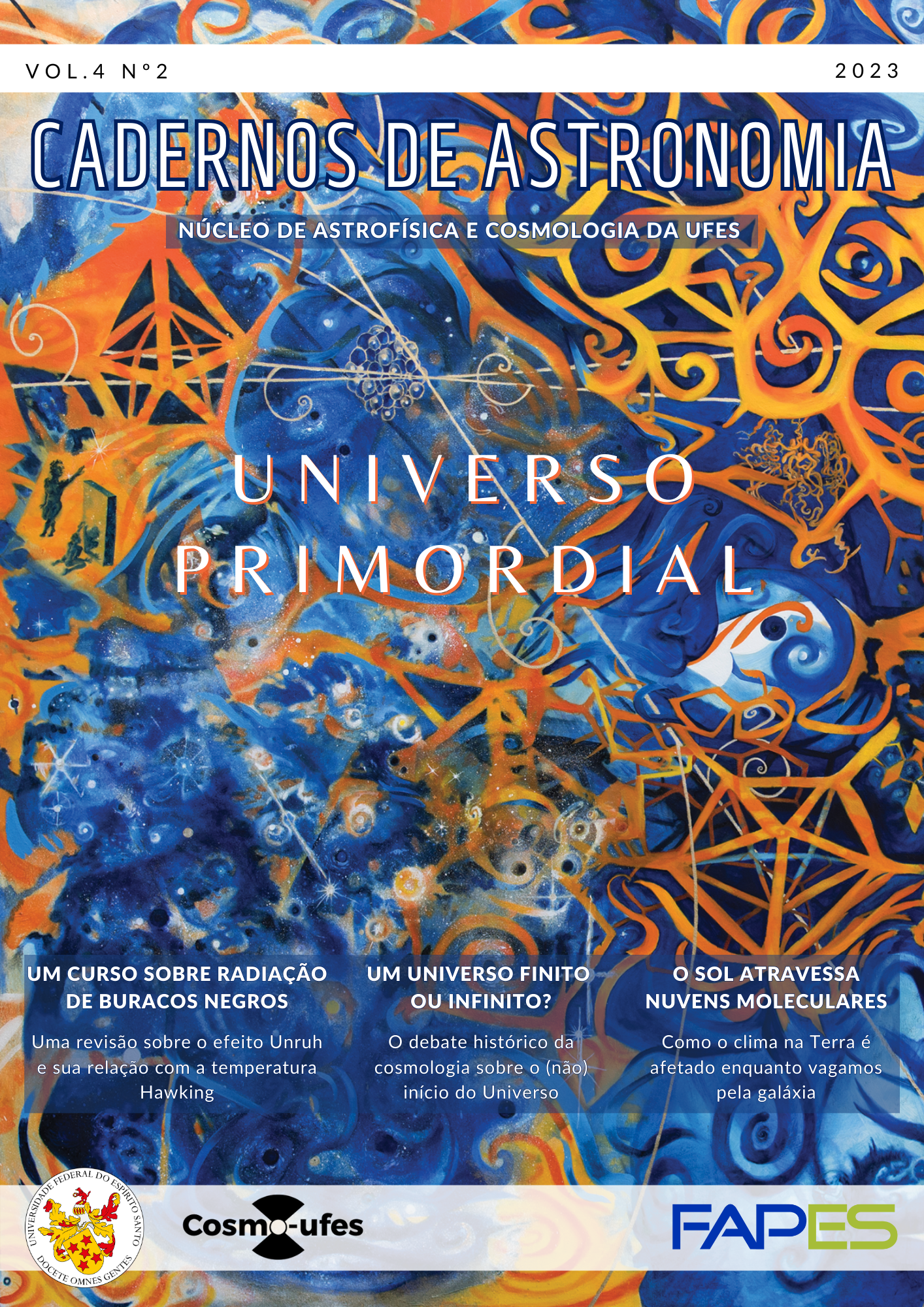Primordial nucleosynthesis: first instants after big bang
DOI:
https://doi.org/10.47456/Cad.Astro.v4n2.42306Keywords:
nucleosynthesis, primordial nucleosynthesis, big bangAbstract
Primordial nucleosynthesis is the central theme of this article that describes the evolution of the universe from its origin to the first 3 minutes after the big bang. The universe is characterized as a cauldron of particles. As the universe expands and temperature decreases, a competition takes place between the creation and annihilation of particles, leading to the formation of the first light nuclei, such as hydrogen, deuterium, tritium, lithium, beryllium and boron. The formation of these nuclei is presented from the point of view of Nuclear Physics.
Downloads
References
A. A. P. Videira e C. L. Vieira, Notas para uma história da cosmologia entre as décadas de 1910 e 1930, Cadernos de Astronomia 3(1), 10 (2022).
C. E. Rolfs e W. S. Rodney, Cauldrons in the Cosmos (University of Chicago Press, Chicago, 1988).
E. Harrison, Cosmology: The Science of the Universe (Cambridge University Press, Cambridge, 2000), 2a ed.
A. R. Liddle e D. H. Lyth, Cosmological Inflation and Large Scale Structure (Cambridge University Press, Cambridge, 2000).
F. Close, Particle Physics: A very Short Introduction (Oxford University Press, Oxford, 2004).
M. Y. Han, Quarks and Gluons: A Centure of Particle Charges (World Scientific Publishing, Singapore, 1999).
P. D. Naselsky e D. I. Novikov, The Physics of the Cosmic Microwave Background (Cambridge University Press, Cambridge, 2016).
D. D. Clayton, Principles of stellar evolution and nucleosynthesis. (The University of Chicago Press, Chicago, 1988).
A. G. W. Cameron, Origin of the Solar System, Annual Review of Astronomy and Astrophysics 26(1), 441 (1988).
M. M. Woolfson, Origin of the Solar System. (Imperial College Press, London, 2000).
Downloads
Published
How to Cite
Issue
Section
License
Copyright (c) 2023 Marlete Assunção

This work is licensed under a Creative Commons Attribution 4.0 International License.






